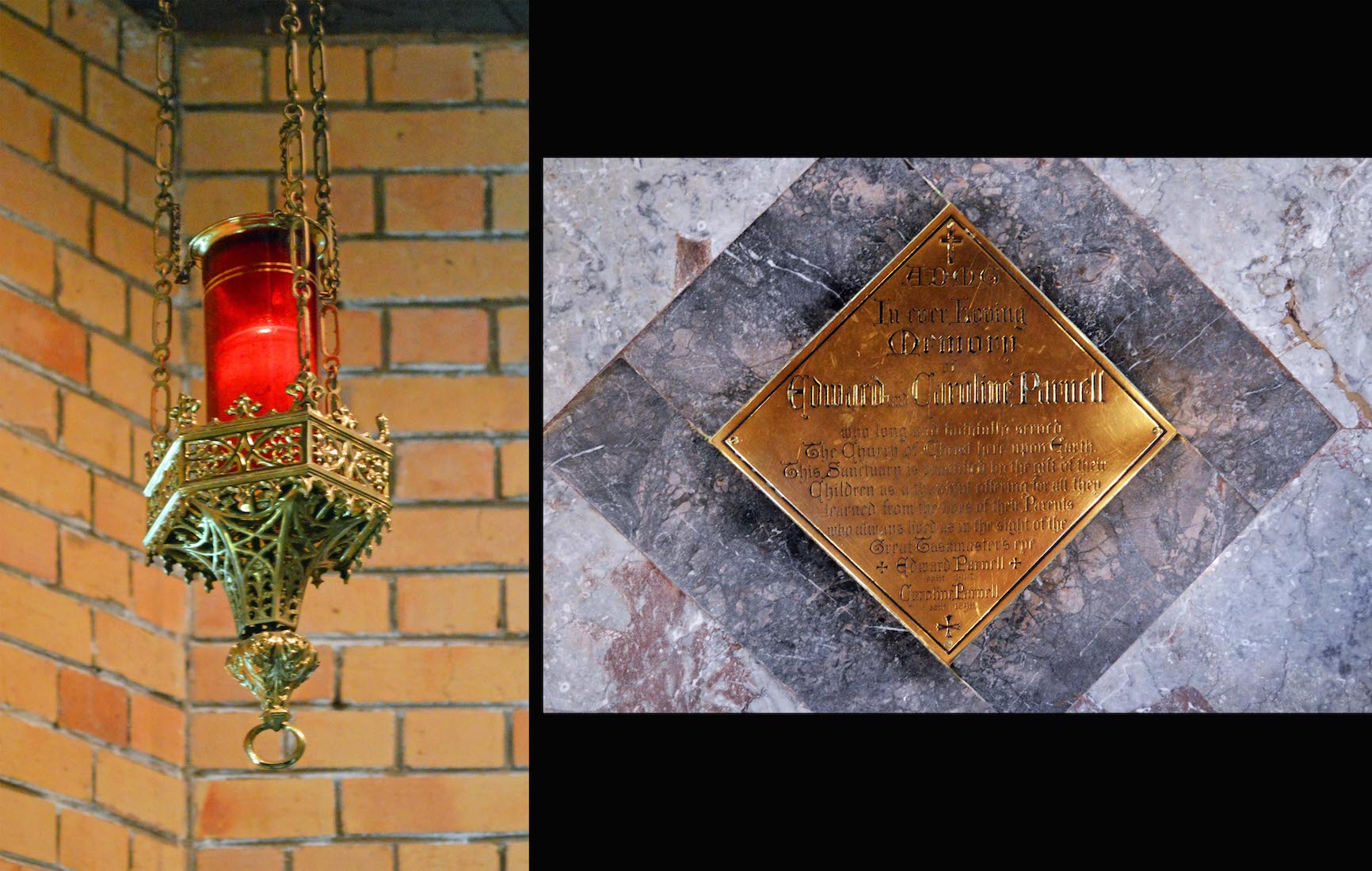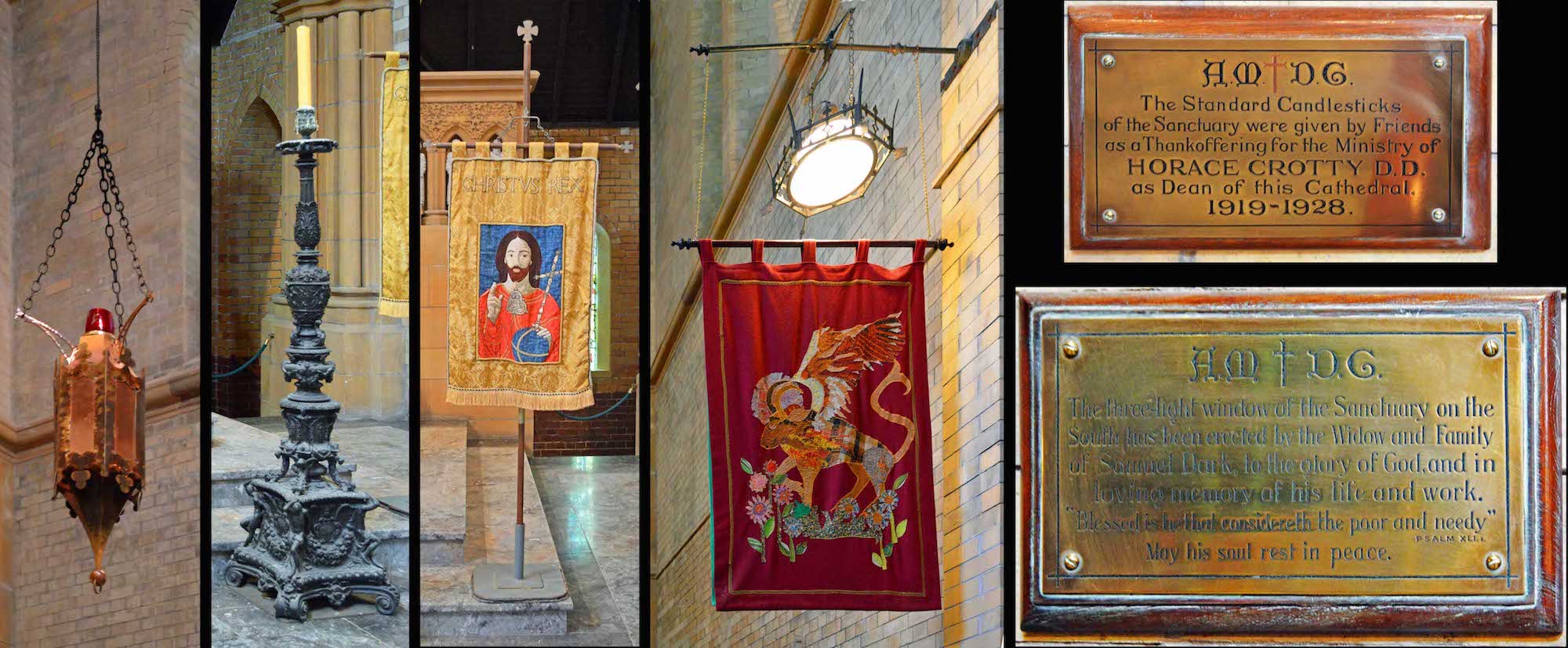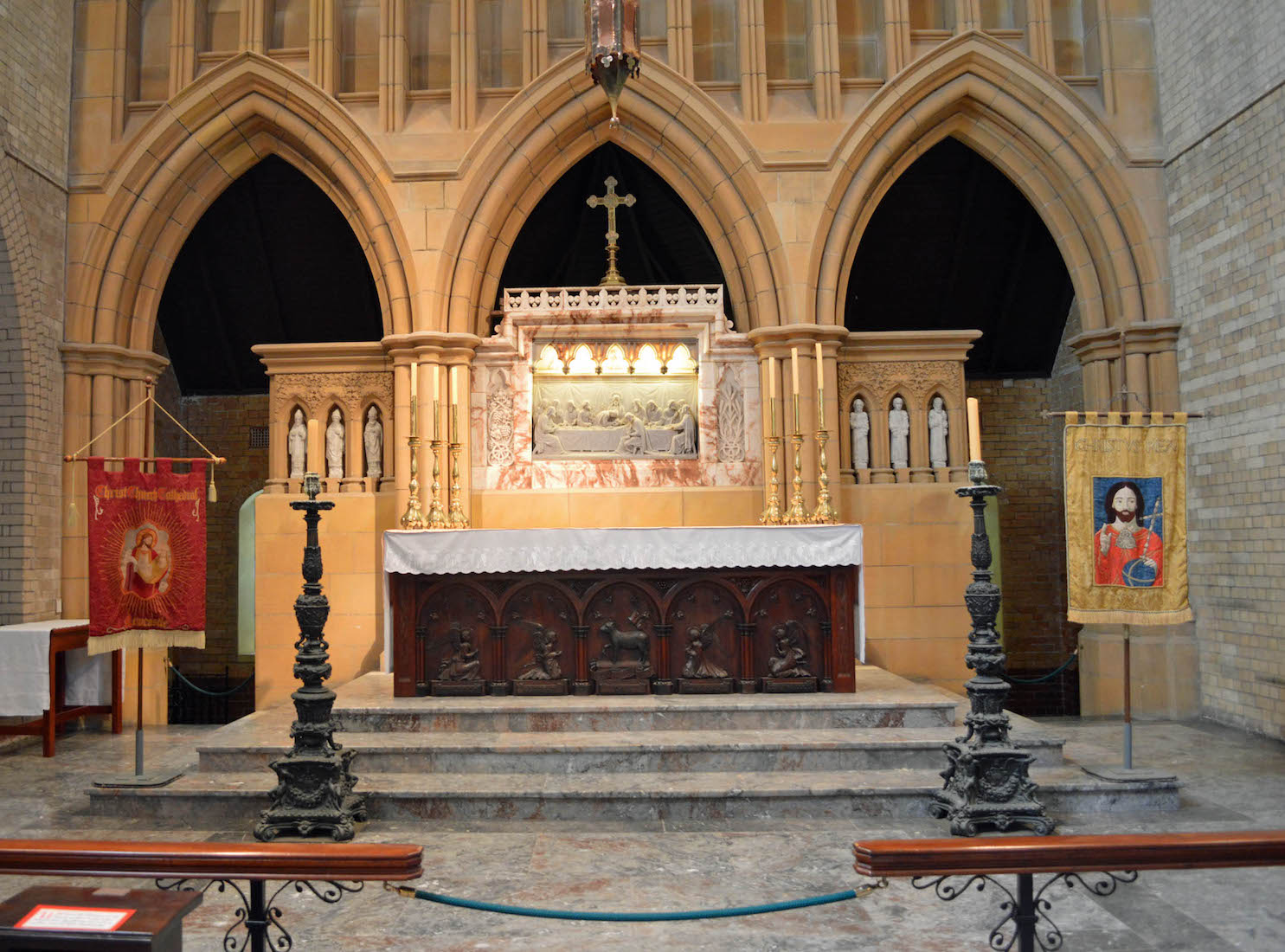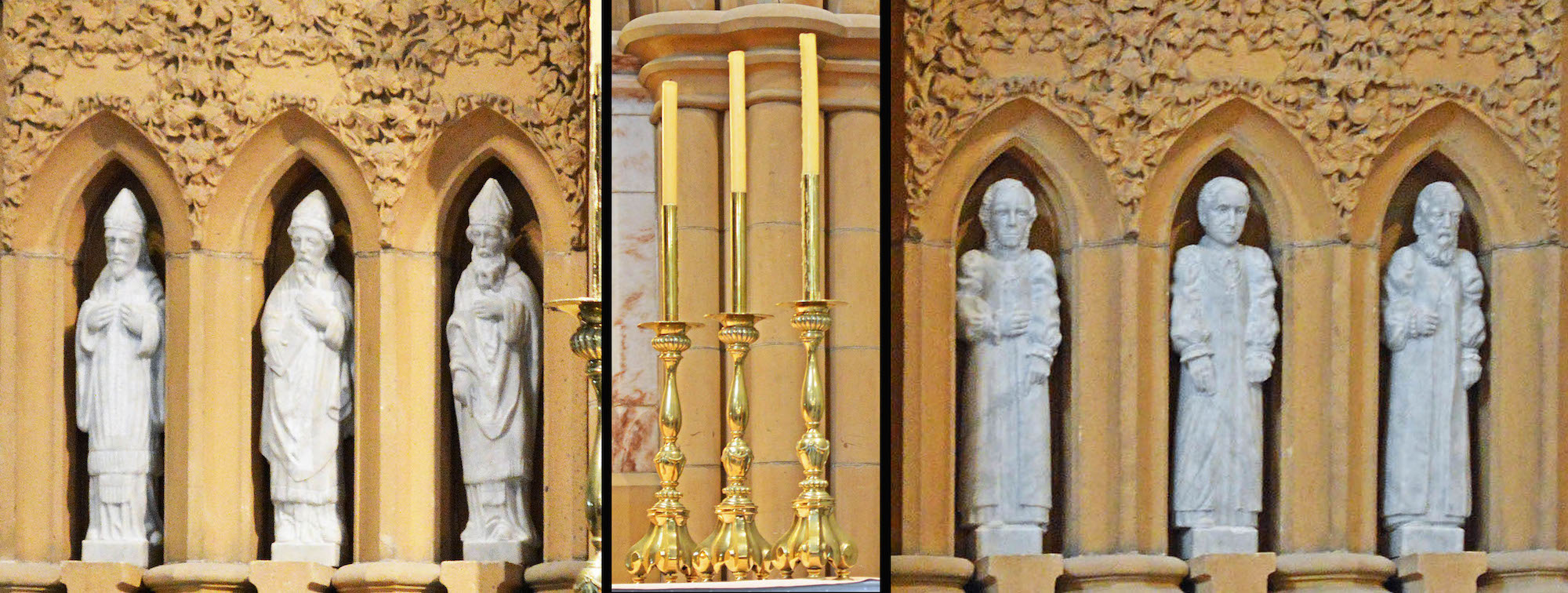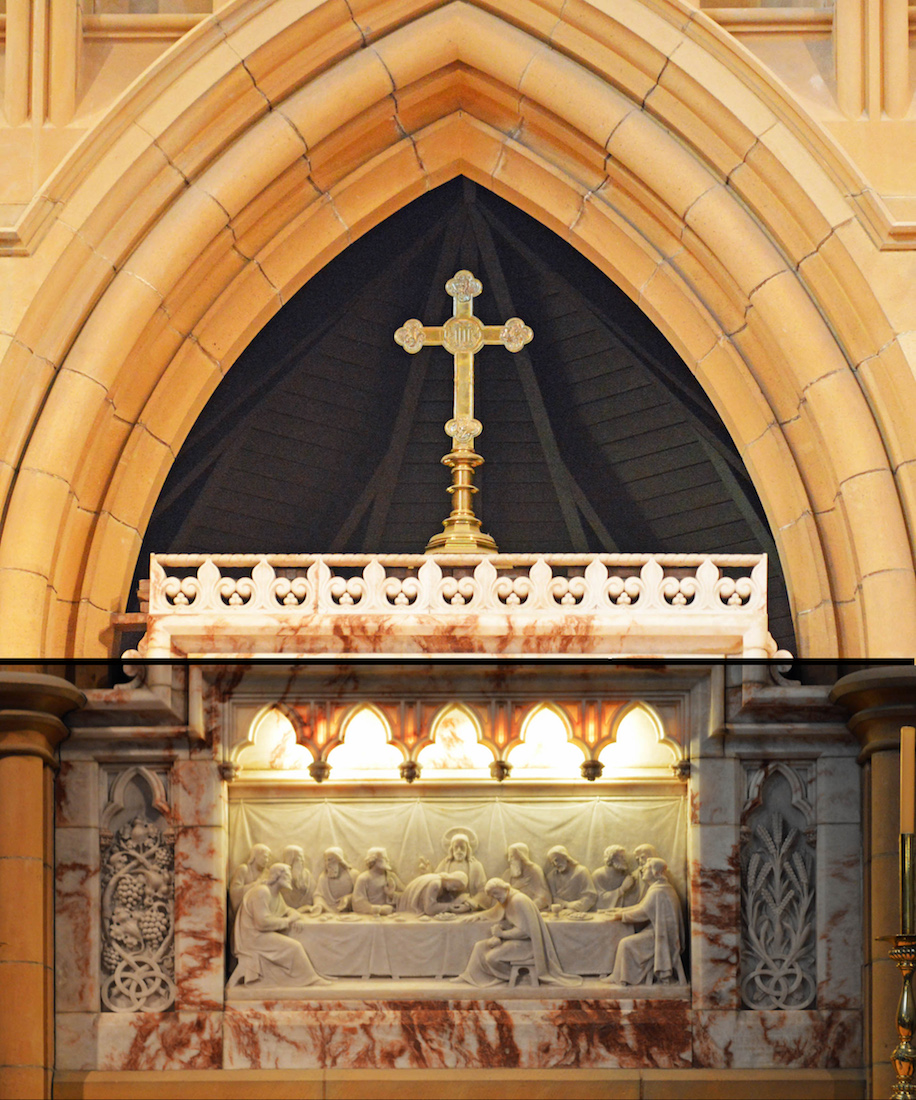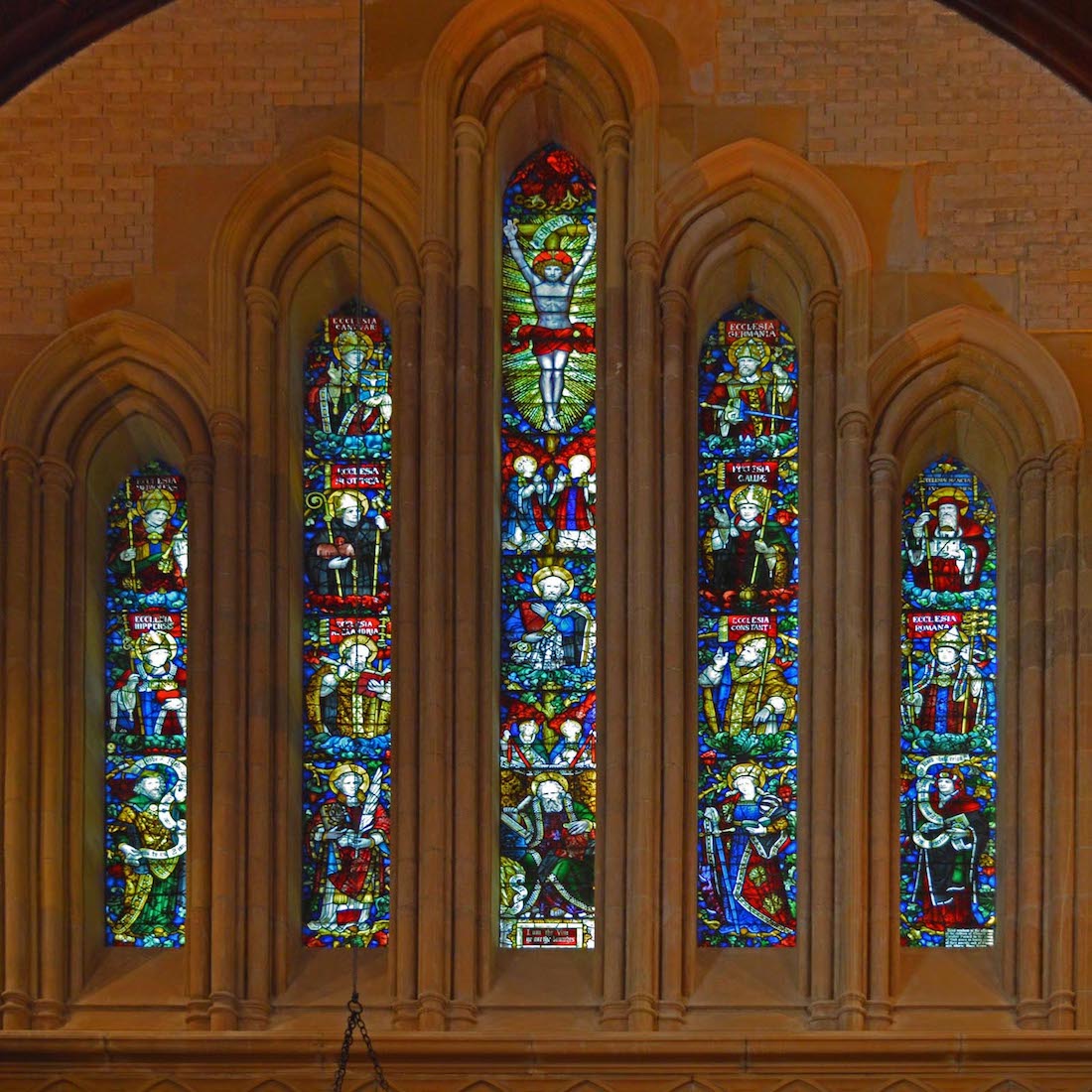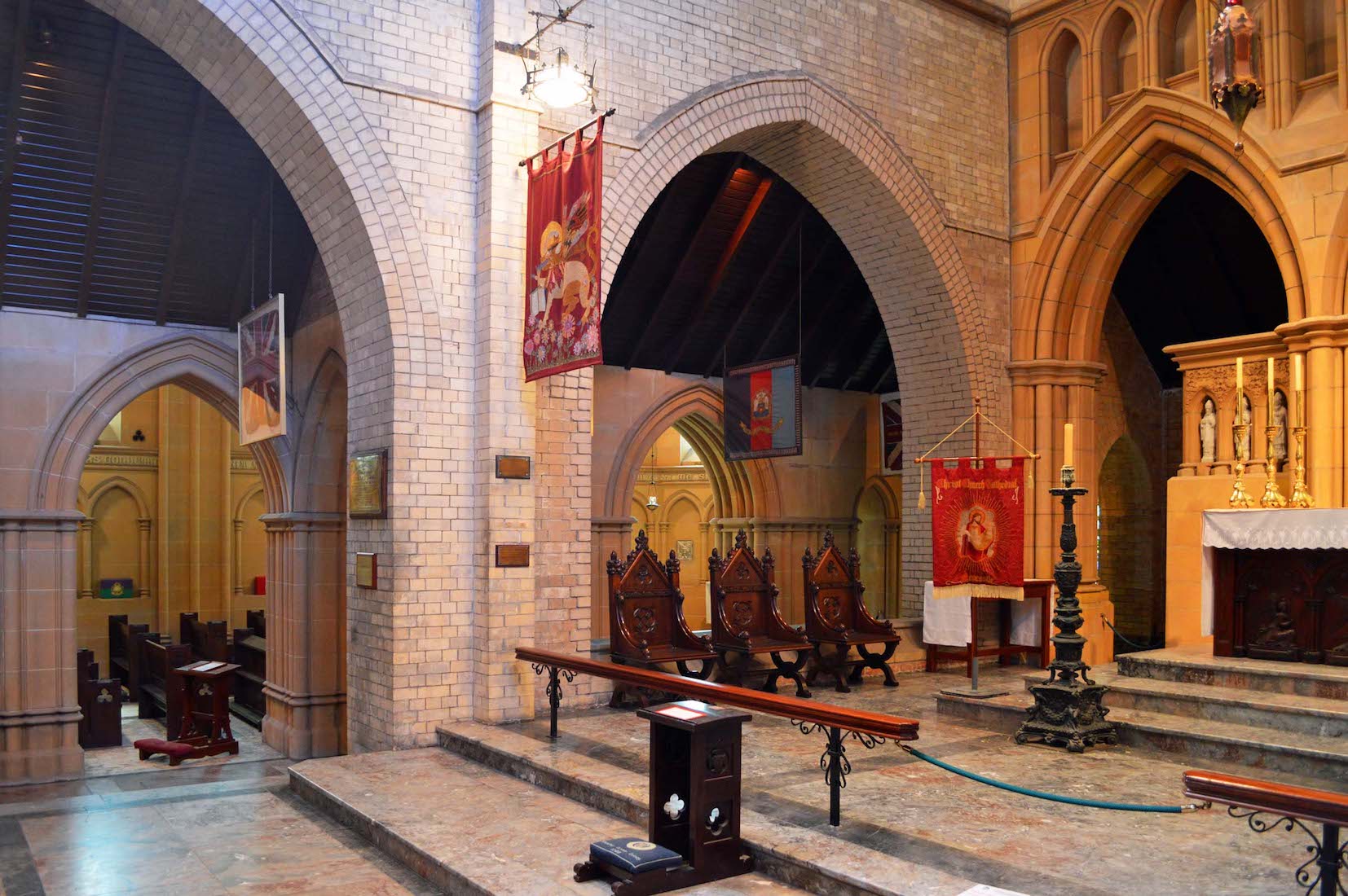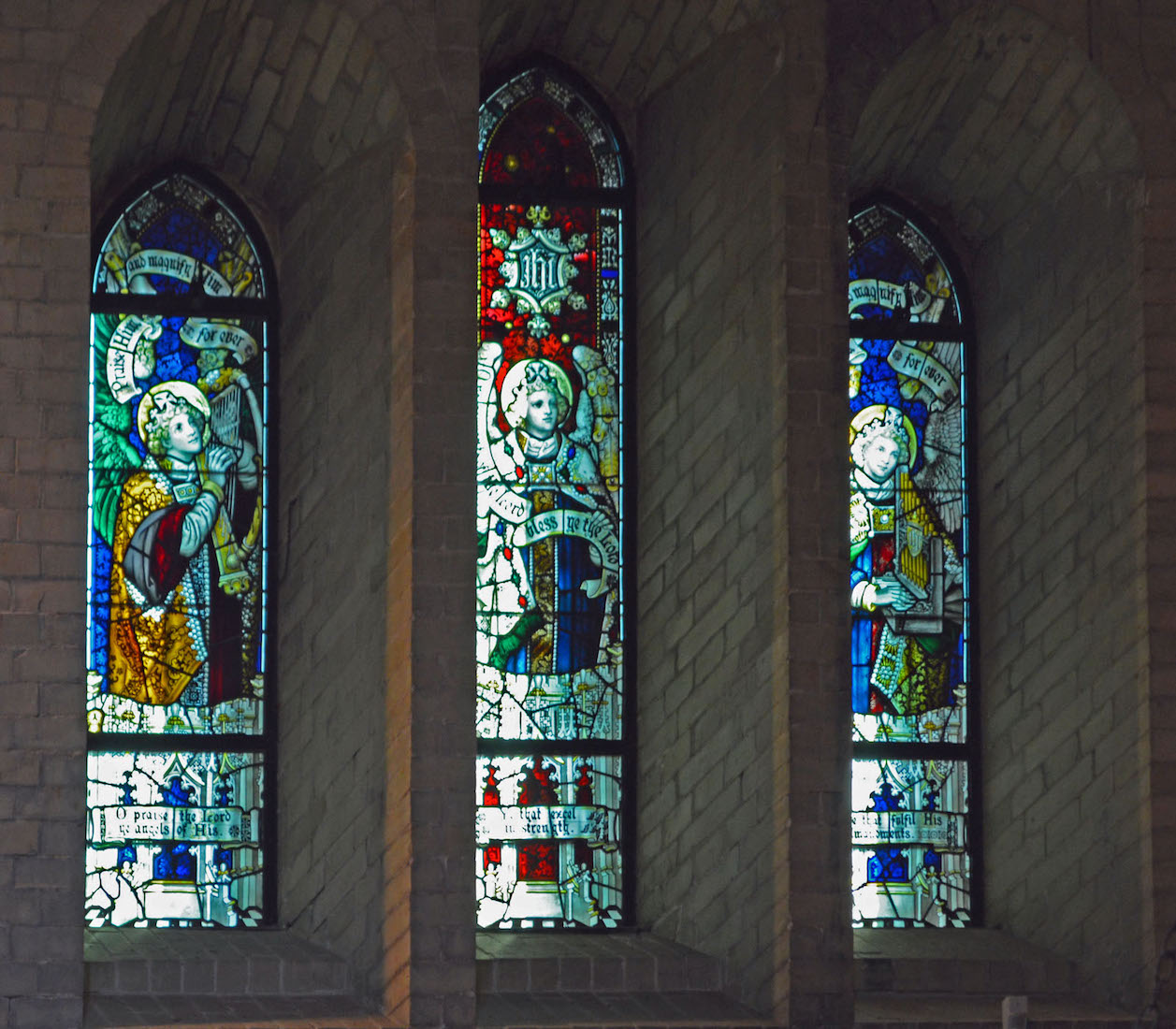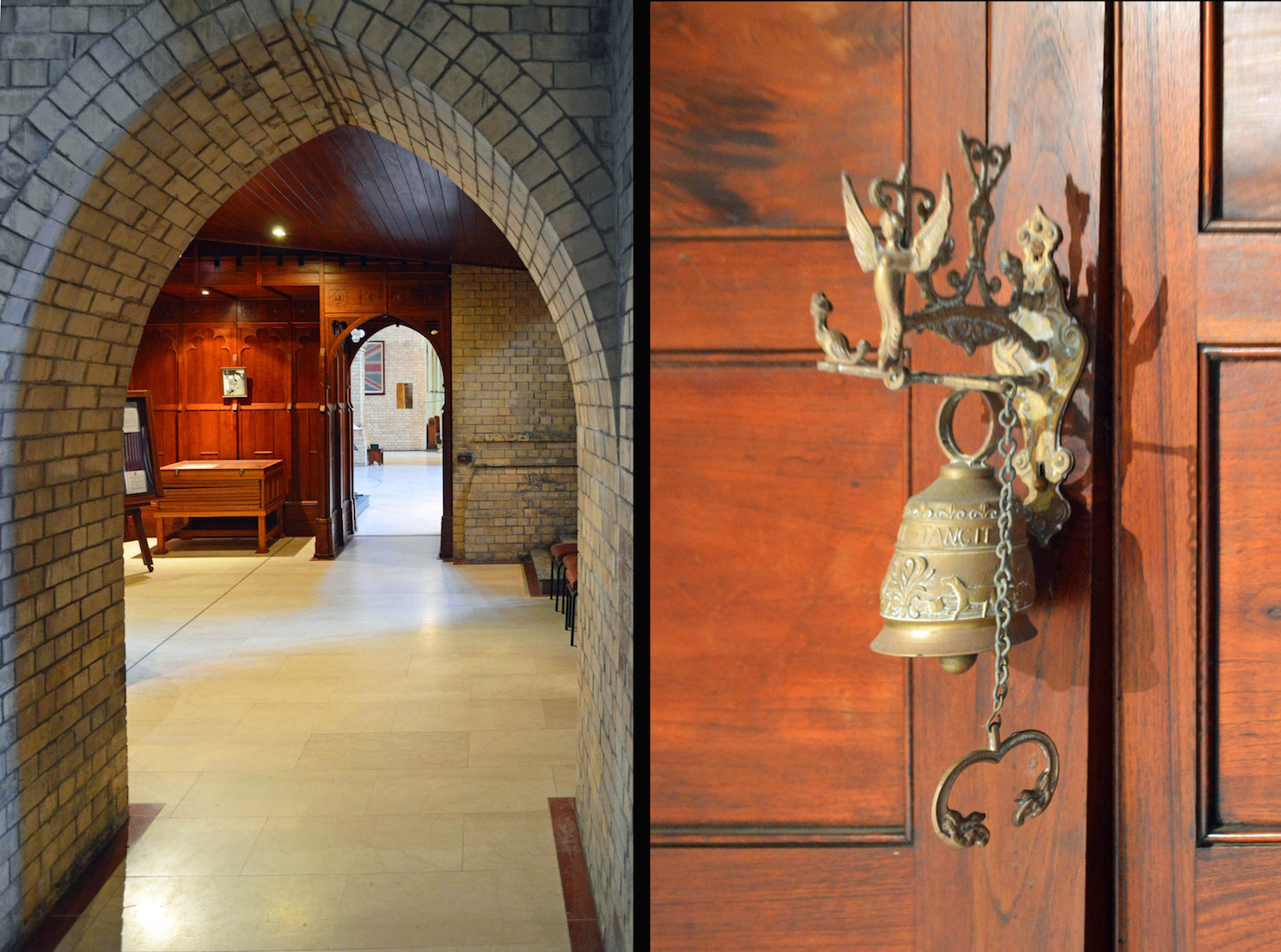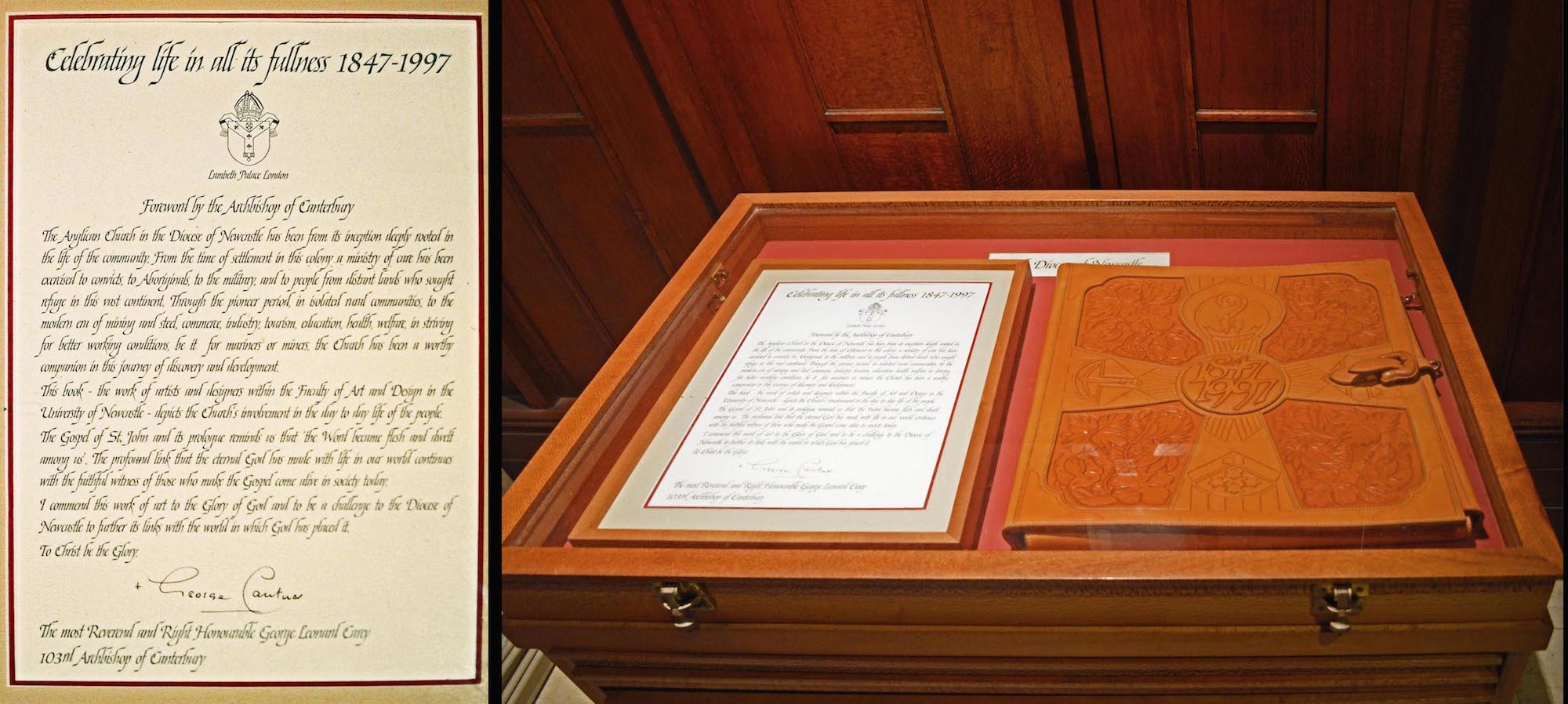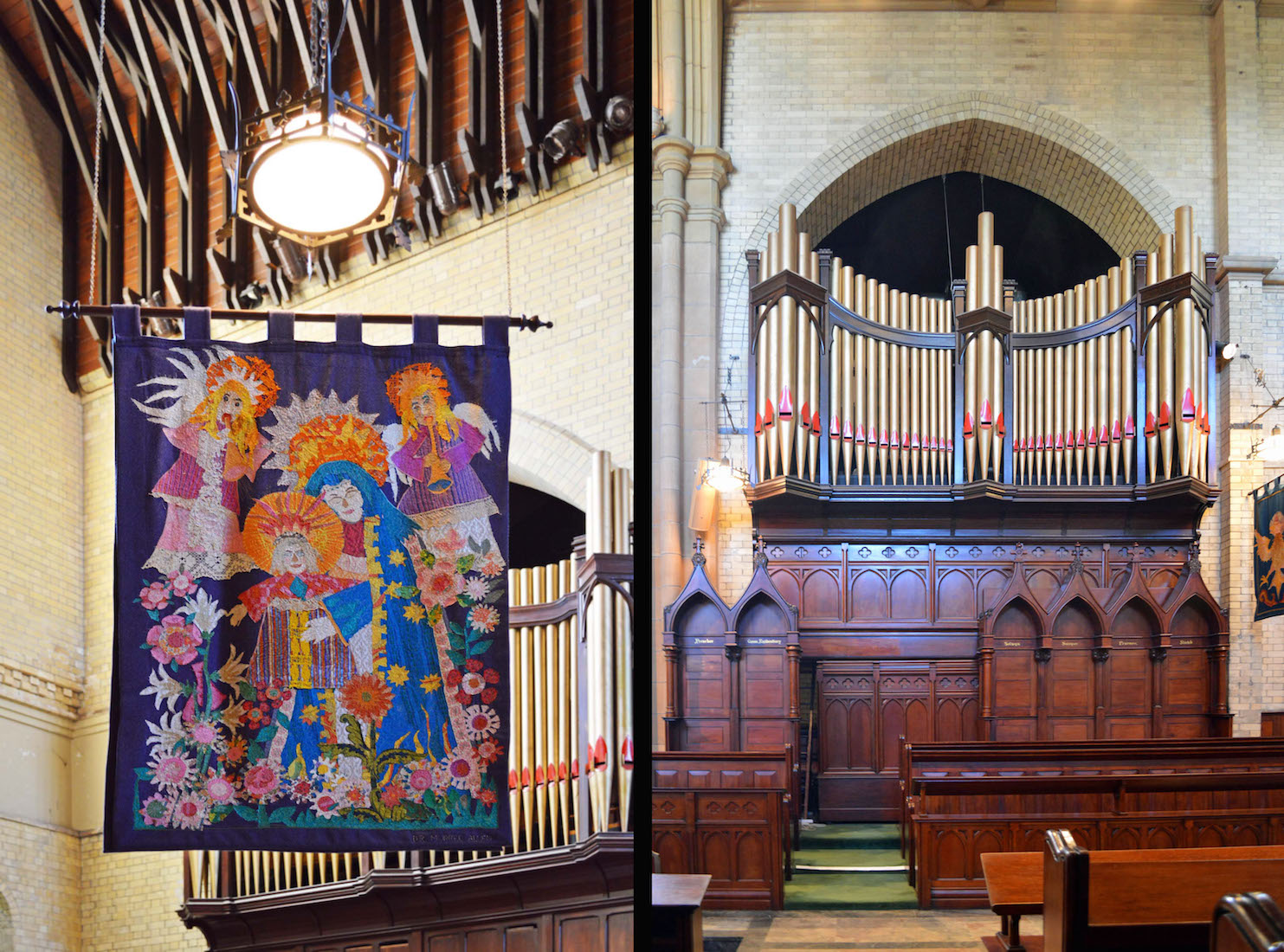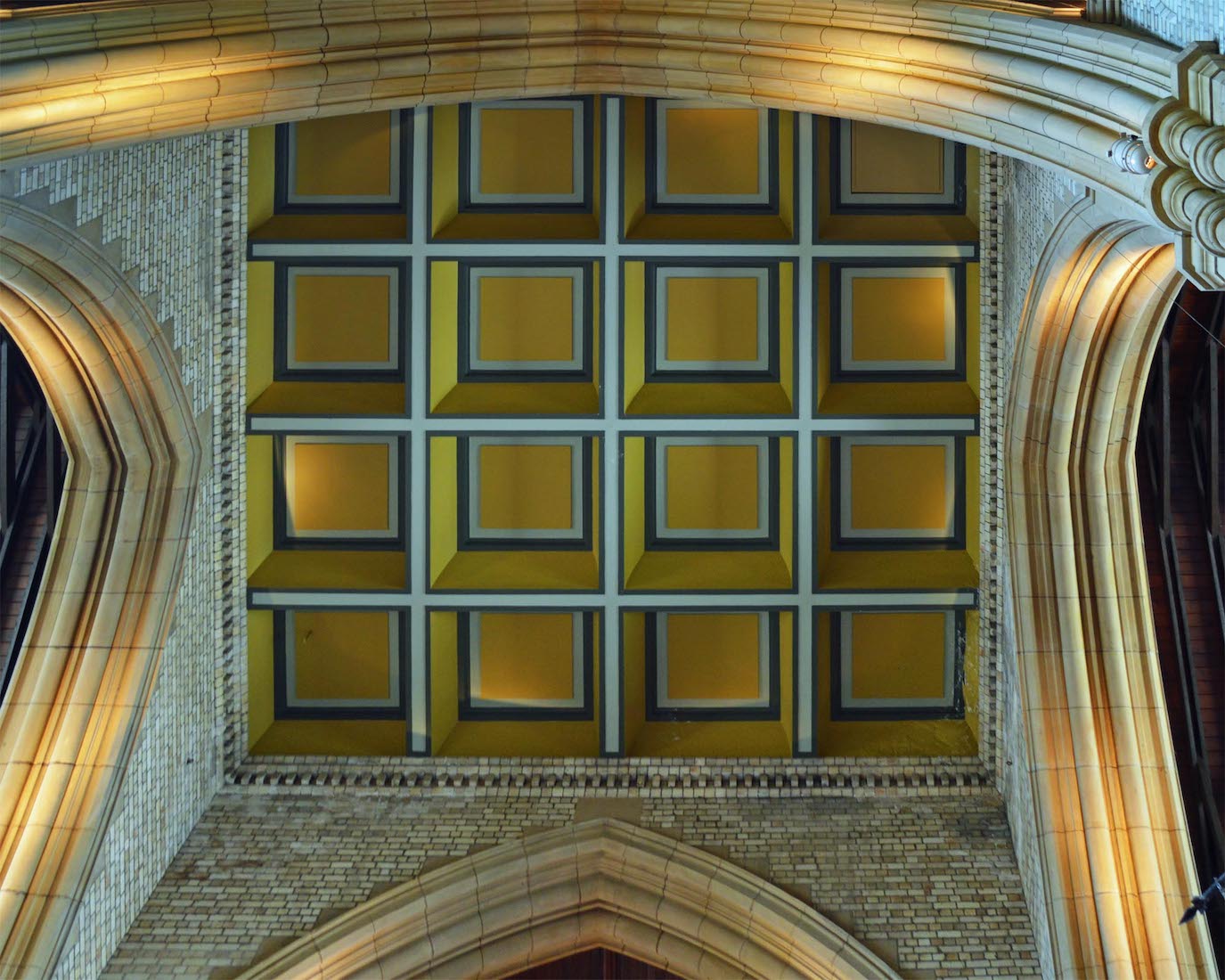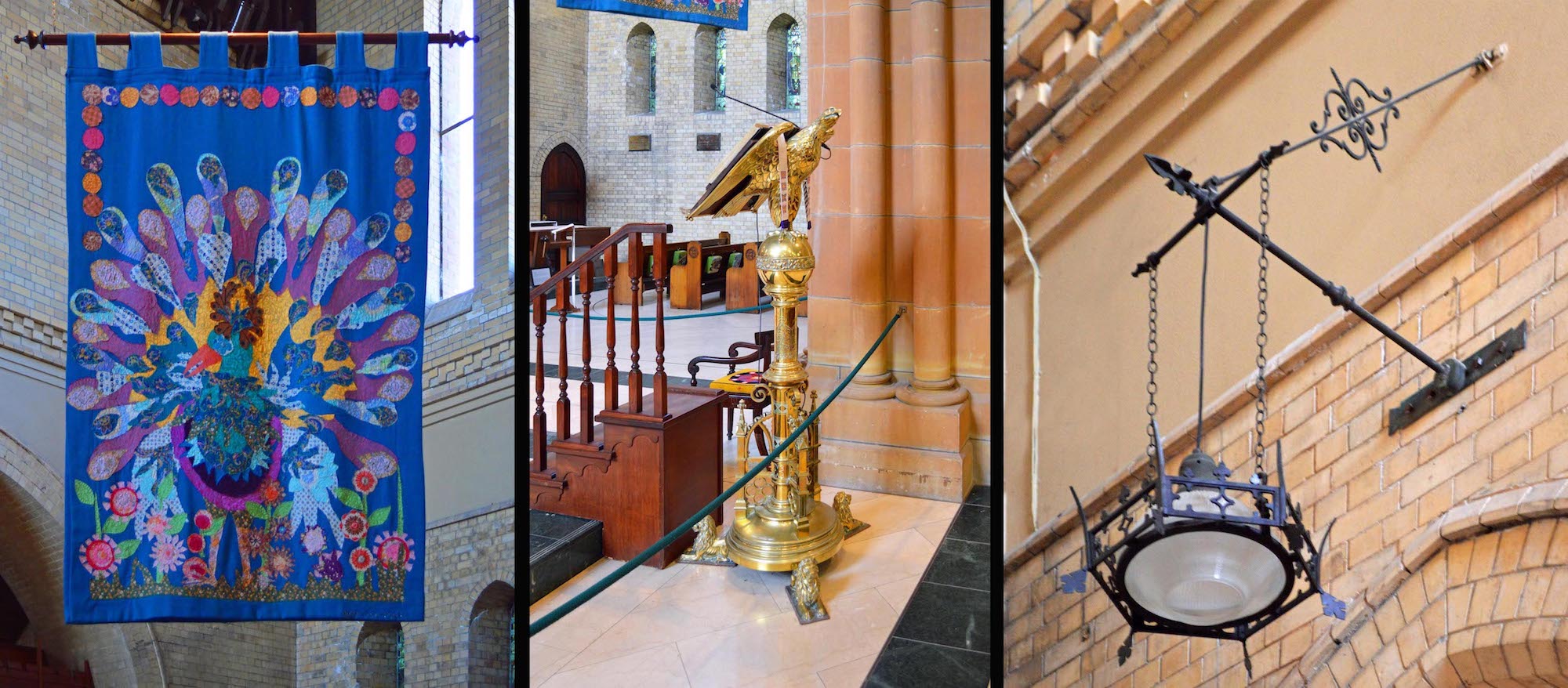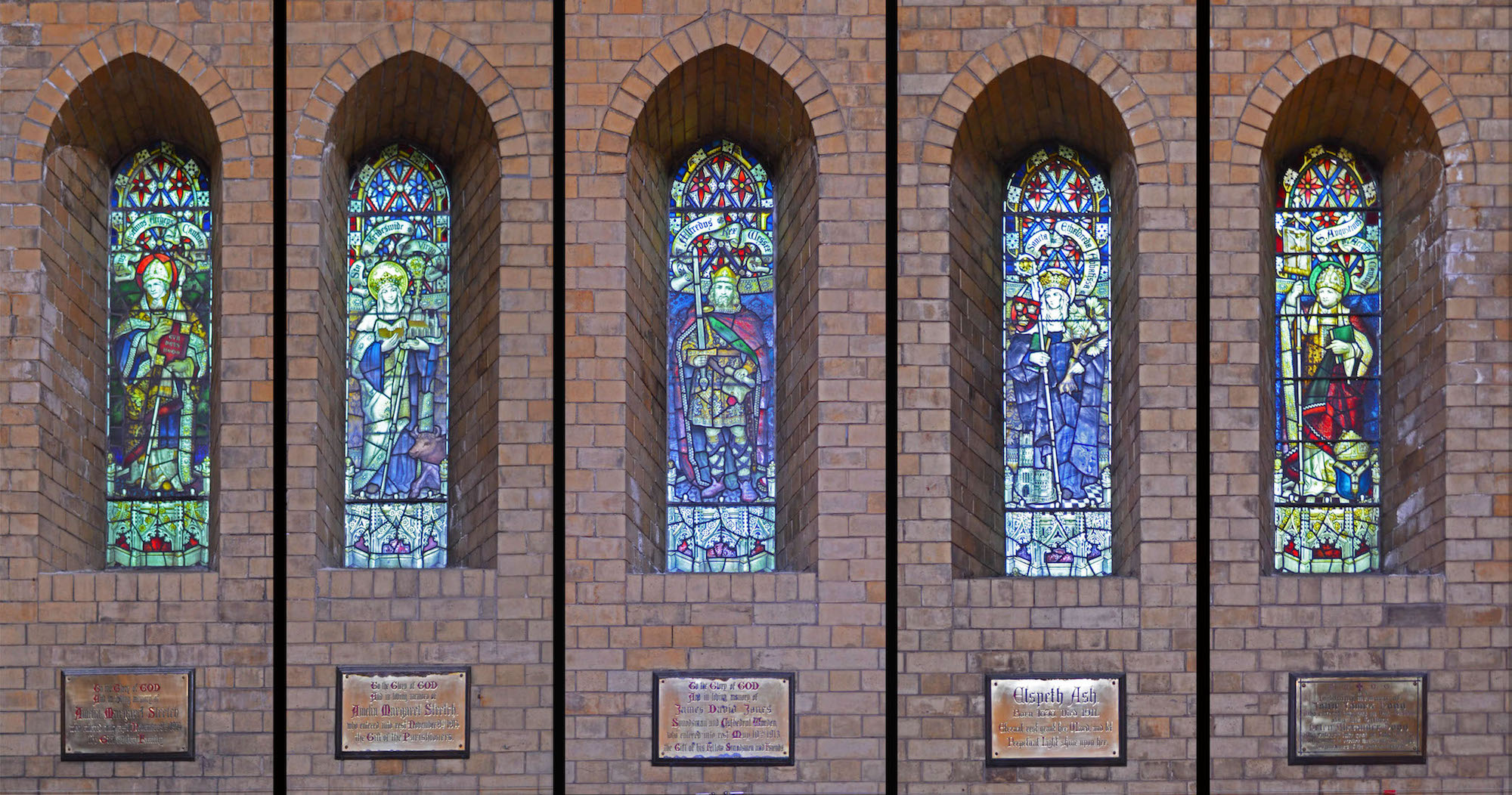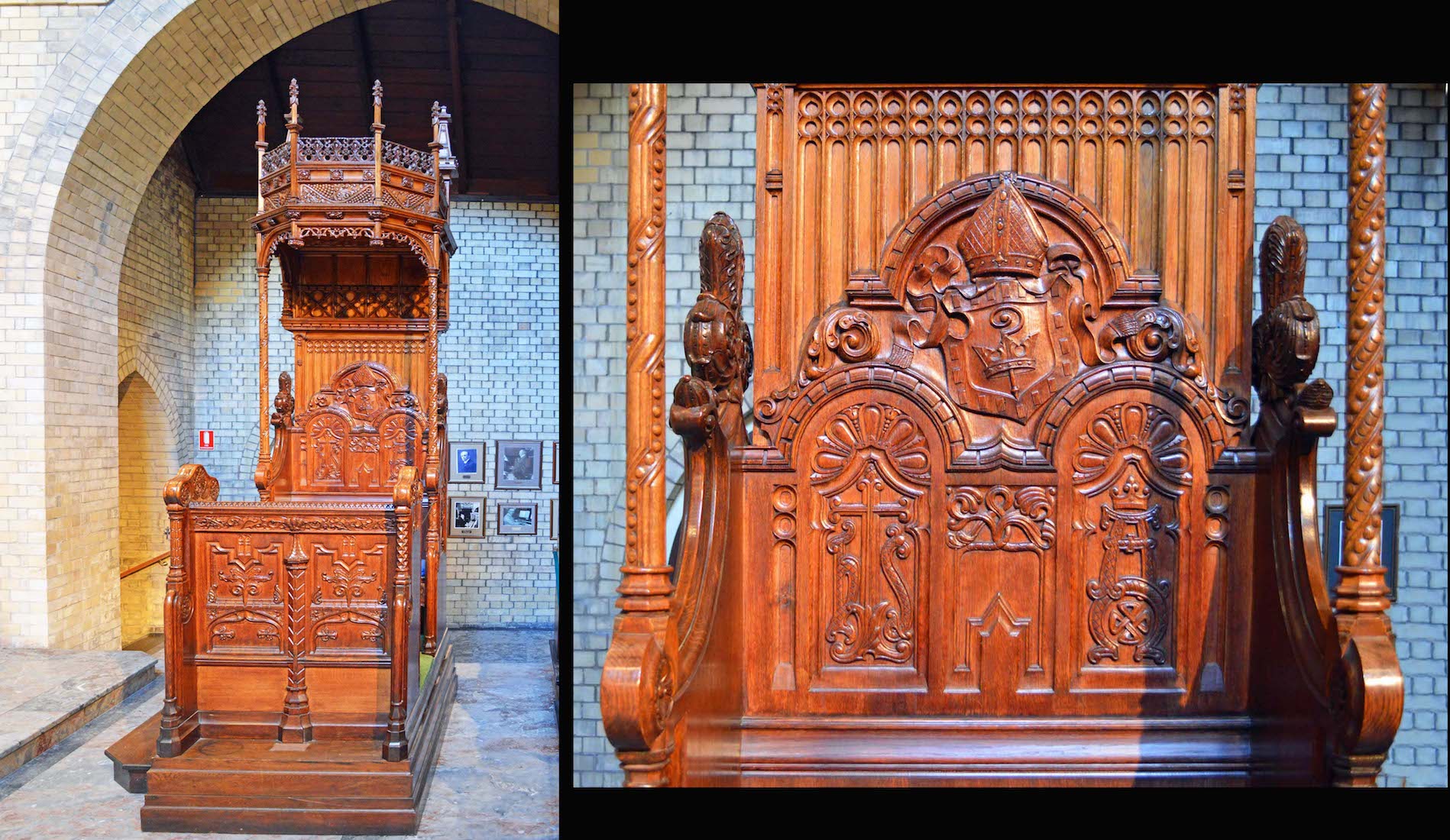
This is the Bishop’s throne, or chair, and the name ‘cathedra’ comes from the Latin (or Greek) word for chair. The Anglican Bishop of Newcastle has jurisdiction over the Anglican churches in a large region of NSW centred about Newcastle. The fact that he is centred in this Church is what gives it the name ‘cathedral’. The cathedra has some finely carved detail. The canopy was given in memory of Eliza Porter by her daughter, Mrs. Gee. PLAN
32C. HIGH SOUTH WINDOWS
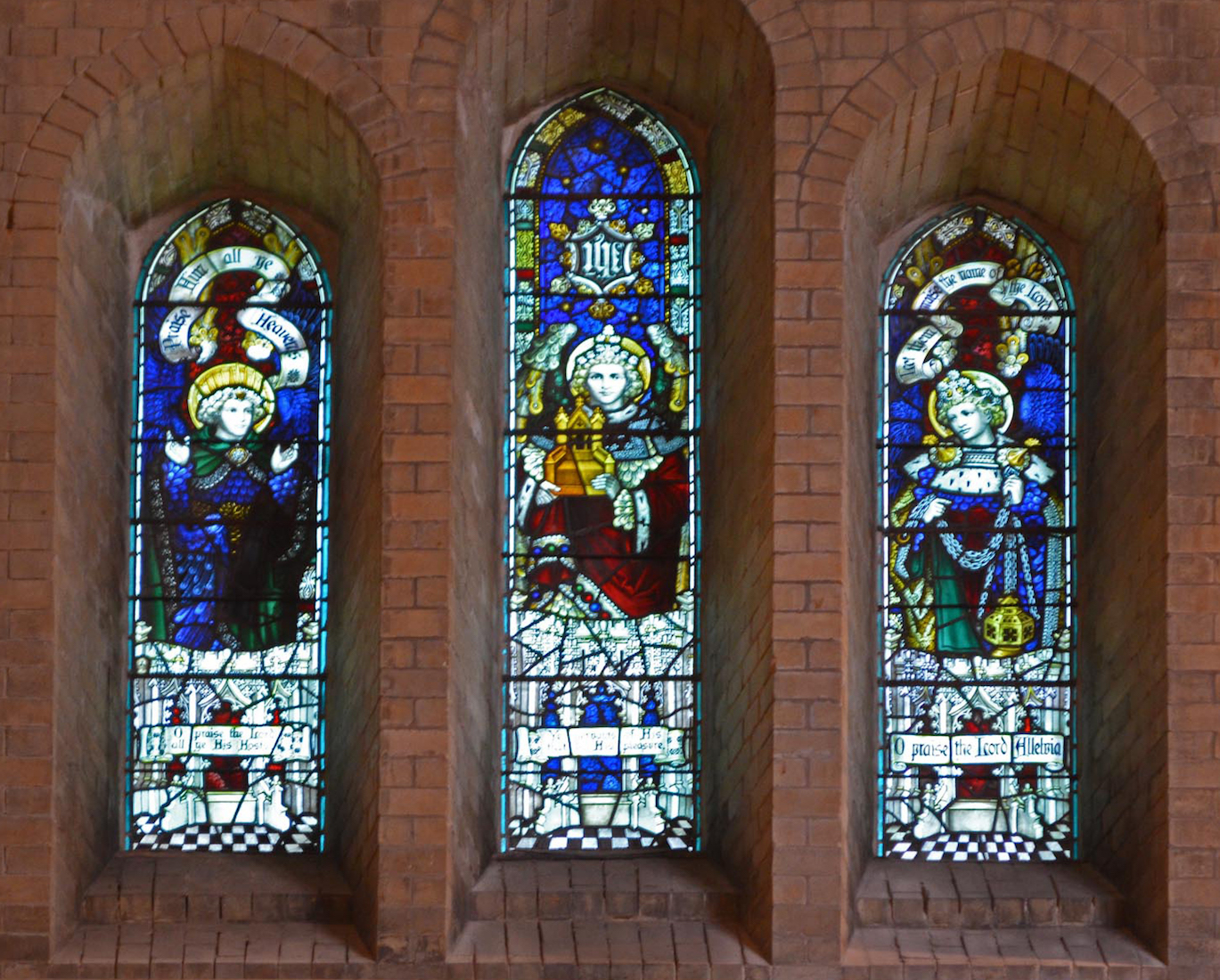
There is much to be observed in the Sanctuary. High above on the South wall are these three stained glass windows with a common theme of praising the Lord. ‘ Praise him all ye heavens ... O praise the Lord, Alleluia.’
32D. LAMP, FLOOR PLAQUE
At our feet is a floor plaque in memory of Edward and Caroline Parnell: a thank offering by their children was used to beautify this sanctuary. Above is an intricate sanctuary lamp, lit to show the presence of reseerved Elements of the Eucharist – Elements which have been blessed and ready for use.
33. SOUTH SANCTUARY
Above the sanctuary in the centre hangs a beautifully crafted sanctuary lamp – a memorial to the 9th Dean, Norman John Blow. Before us is one of the Pavement Candlesticks – made about 1570 by Anabale Fontana, and the oldest treasures in the Cathedral. A golden banner shows Christ with orb and cross, and carrying the title ‘Christus Rex’ (Christ the King). Hanging from the wall is one of the set of Cathedral banners representing St Luke as a gold winged creature with the head of an ox – ideas of sacrifice, service and strength. Close by are two memorial plaques.
34B. SIDE FIGURES
... but for now we note the three figures on either side. I can find no identification of these figures, but the three on the left appear to be bishops, and the three on the right may well be Biblical characters.
34C. LAST SUPPER
The alabaster reredos was a gift from Miss Lillian Nicholson, and was added in 1938. It is similar to the reredos of the Last Supper placed by King Edward VII in the parish church of Whippingham on the Isle of Wight to commemorate the life of his mother, Queen Victoria. The reredos is crowned with a gold budded cross bearing the Christogram IHS.
34D. HIGH ALTAR DETAIL
The high altar is made from Australian rosewood. The five panels depict the Paschal Lamb in the centre and angels kneeling in attitudes of prayer on either side.
35. EAST WINDOW
The East window was erected in 1912, the gift of the Parnell family. Although much is written about ‘the 72 stained glass windows’ in this Cathedral, I can find little documentation about this East window. The top central figure is Christ, crucified and risen. Below him is St Peter, holding the Keys of the Kingdom. On either side of the central lancet are depicted various bishops with signs signifying churches of different nations – ‘Ecclesia Germania’, ‘Ecclesia Romana’ etc. The figures across the bottom appear to come from older times. A panel at the base of the central lancet reads: ‘I am the vine, ye are the branches.’
36A. NORTH SANCTUARY
We next turn our attention to the North side of the sanctuary. A second pavement candlestick, some Canon Stalls, two more banners, four plaques ... and a glimpse back through to the Warriors’ Chapel.
36B. HIGH NORTH WINDOWS
High up on the North wall is another set of windows with the theme of praise.
36C. NORTH BANNERS
The lower scarlet banner at right carries a picture of Christ as the Good Shepherd, and the words ‘Christ Church Cathedral, Newcastle’. The high banner is another in the Cathedral set, this one representing St Mark – a gold winged creature with the lion’s face. This speaks of the royal dignity of Christ – accentuated in Mark’s Gospel. .
36D. PLAQUES
There are four plaques displayed on the North side of the sanctuary. • The sanctuary north windows were erected in memory of William Chaff, using his bequest. • The Sanctuary Lamp was erected as a memorial to Norman John Blow – Dean of the Cathedral 1949 – 1950. • The next plaque is in memory of Howard King who was Cathedral organist from 1889 – 1919. • The fourth plaque is in memory of those of the 13th Australian Infantry Battalion (A.I.F.) who died in World War II.
37A. BELOW ORGAN CONSOLE
We leave the South ambulatory, and pass through into the Organ Undercroft. This is an open area below the organ console from where steps lead up to the tower. On the North wall a small brass ceremonial bell is affixed. On the West side a cabinet contains a Commemorative Book entitled ‘Celebrating Life in all its Fullness 1847 – 1997’.
37B. COMMEMORATIVE BOOK
The commemorative book contains the work of artists and designers from within the University of Newcastle, depicting the Church’s day to day work in the life of the community. The foreword is written by the Archbishop of Canterbury of the time, George Leonard Carey.
37C. ORGAN PIPES
From the Southern undercroft we can look across the chancel to the choir stalls and organ. The organ today contains 2471 pipes, 58 speaking stops, 13 couplers and two tremulants. The console is in the South gallery and connected to the main organ in the North gallery by some 20 metres of multi-wire cable. The action is electro-pneumatic. From a different angle we can see the colourful Madonna and Child banner with the organ as a backdrop.
38A. CROSSING ROOF
We leave the chancel and move to the crossing under the tower. The crossing ceiling is very dramatic!
38B. LECTERN
The peacock banner hangs at the South West corner of the crossing. The peacock is an early symbol of the Resurrection. Below the banner is the eagle lectern. This is commonly found in Anglican churches; we notice the lions supporting the base. The lectern holds the Bible used for scripture readings. Throughout the Cathedral, the light fittings are designed in a crown of thorns pattern. Christianity has many symbols, and they are probably all found in Christ Church Cathedral!
39A. SOUTH TRANSEPT
We now look South towards the South transept. We notice the timber in the ceiling, and the ornamental frieze running around the walls. At right hangs a banner, just behind the lectern, as we have already seen. The South wall is similar to the corresponding wall in the North transept with five clear lancet windows above five smaller stained glass windows. At left there appears to be a chapel ... to explore!
39B. SOUTH TRANSEPT WINDOWS
The stained glass windows of the South transept portray five Saints. From left to right these are: • St Anselm, Archbishop of Canterbury; • St Friedswide, Virgin – both in memory of Amelia Margaret Stretch who died December 9th 1914; • King Alfred, Wessex – In memory of James David Jones who died May 10th 1913; • St Etheldreda, Abbess – In memory of Elspeth Ash Born 1838 Died 1911; • St Augustine, Archbishop of Canterbury – In memory of John James Hogg who died Dec 23rd 1919, and his mother Helen Alexander Hogg who died July 10th 1923


